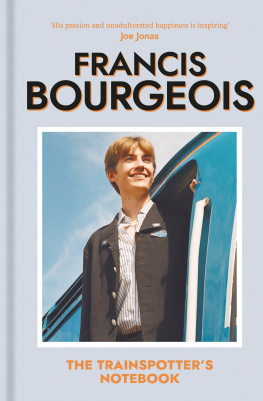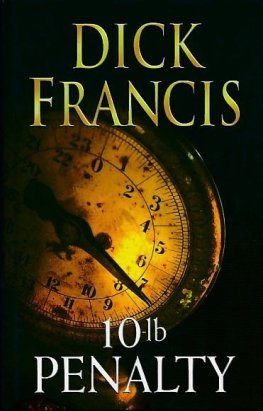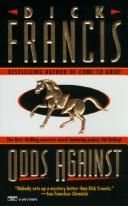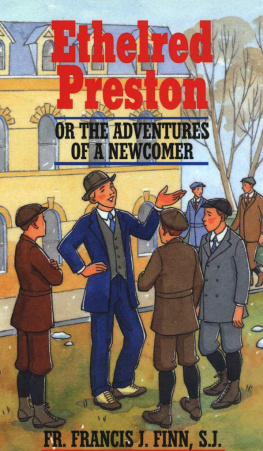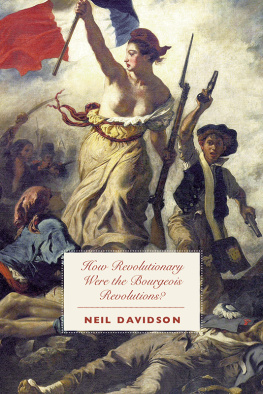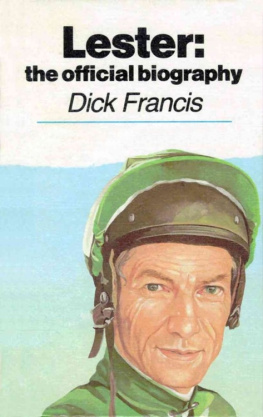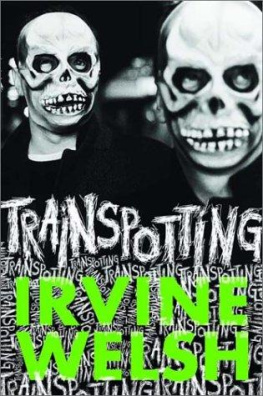Francis Bourgeois
THE TRAINSPOTTERS NOTEBOOK

TRANSWORLD
UK | USA | Canada | Ireland | Australia
New Zealand | India | South Africa
Transworld is part of the Penguin Random House group of companies whose addresses can be found at global.penguinrandomhouse.com.

First published in Great Britain in 2022 by Bantam
Copyright Francis Bourgeois, 2022
The moral right of the author has been asserted
Cover design by Richard Ogle/TW
Cover photography by Isaac Marley Morgan
Every effort has been made to obtain the necessary permissions with reference to copyright material, both illustrative and quoted. We apologize for any omissions in this respect and will be pleased to make the appropriate acknowledgements in any future edition.
Designed by James Alexander at Jade Design
ISBN: 978-1-529-90204-4
This ebook is copyright material and must not be copied, reproduced, transferred, distributed, leased, licensed or publicly performed or used in any way except as specifically permitted in writing by the publishers, as allowed under the terms and conditions under which it was purchased or as strictly permitted by applicable copyright law. Any unauthorized distribution or use of this text may be a direct infringement of the authors and publishers rights and those responsible may be liable in law accordingly.
To Amy, my girlfriend. Thank you for being there with me on this journey.

Visit any railway station in the UK, especially on the mainline, and have a look at the end of the platform. Almost certainly there will be a trainspotter. Sometimes there will be a crowd, at other times just a handful, depending on whats coming through. Trainspotters and train enthusiasts can be any age, any gender, any temperament. Its easy to identify us: a notepad, a camera, sitting on a bench waiting for a locomotive to pass through, standing at the end of the platform setting up a shot. Are you here for the railtour? a question that can turn a nomadic outing into an adventure with a crew of fellow enthusiasts. Trainspotters like me can find instant camaraderie through our mutual appreciation for the iron horses that gallop across our network.

In the UK, trainspotting began in the early nineteenth century when rail travel was just emerging. The act of being a trainspotter wasnt necessarily recorded back then, but no doubt there would have been wide-eyed children, quietly appreciative parents and curious grandparents marvelling at George Stephensons Rocket as it chugged along at 30mph. By the twentieth century, the romance of travelling by train and the beauty of steam locomotives began to fuel a fascination with the railway. The Duchess of Hamilton; the Flying Scotsman; the class A4s, particularly the Mallard that, in 1938, broke the record for the fastest steam locomotive, achieving 126mph just south of Grantham in Lincolnshire, all brought the bold image of the railway into the minds of the general public and ignited the beginning of trainspotting as we know it.
Subsequently, the numbers on the sides of locomotives, not just the hero engines but the workhorses of the shunting yards, introduced a new dimension to trainspotting in this era. Nearly twenty thousand steam locomotives ran along the network towards the end of the 1930s, all with unique numbers, some with names, to be collected by trainspotters, along with other relevant information, and compiled in a book. Just the same way someone might collect stamps or coins.
After the Second World War, the railway industry went through drastic changes: diesel locomotives started to take over from their steam counterparts, compounded by the modernization plan of 1955, whereby manufacturers were commissioned to create multiple classes of electric and diesel locomotives in small batches. Through trialling on the network, the most reliable, powerful and efficient locomotives were selected for further orders. This created a hive of separate classes of diesel locomotives operating in different regions with varying degrees of rarity, manufactured by individual companies with different engines, while steam was shouting its last hurrah. It was certainly an exciting time to spot trains. Lines of children would sit with their legs over the edge of the platform, all with notepads, writing down numbers, while older spotters stood behind. Through the 1970s and 1980s, electric and diesel locomotives and multiple units dominated the lines. Steam was no longer the principal source of power. Railway photography became an increasingly popular way of cataloguing locomotives that had been spotted.
The 1990s, the era of privatization, brought new liveries. Spotters were now capturing moments on camcorders, though numbers were still being taken down in trusty notebooks. In the early 2000s, the diesel and electric relics of the previous century started to fall away, replaced by more efficient, less polluting and quieter locomotives and multiple units. Some of the original trainspotters started to fall away too.
Trainspotting found a home on social media sites like Flickr and Facebook in the 2010s: a game-changing way to share the rare movements that might have taken place on a particular day. Instagram enhanced this, then TikTok. A new, younger generation of trainspotters have started to emerge and connect with one another. The station platforms of the last century are now virtual, with enthusiast groups, spotting group chats and social media feeds bringing enthusiasts together, sparking new interests and sharing the beauty of the railway with an expanded audience. The platforms are full, and I am glad to be part of it.

Different parts of my brain are tickled by the railway. The huge amounts of momentum in a moving train, juxtaposed by the directional restriction of the rails, gives me an odd sense of calm. There is so much predictability in the direction of the train; its clear what is going to happen next. Trainspotting also taps into my desire to collect things, which began with Hot Wheels cars when I was a toddler and, later, noting down details of cool cars that I had seen.
Nowadays I record my locomotive encounters in videos and photographs, which I then order and date. The main stimuli from the railway for me are the sounds: screeching rails, vibrating metal, groaning traction motors, thrashing diesel power units, explosive tones. Sonic energy from the railway gives me goosebumps and electricity in my body. I can happily ride along and listen to a class 455 with its refurbished Vossloh Kiepe traction motors all day, swinging up and down with the varying pitch of the motors. The tunnel just after Leatherhead is a particularly great spot for an exhibition of the animal-like scream from beneath the carriages. What may just be the ambience of a commute, for me is an anthem for my passion.


